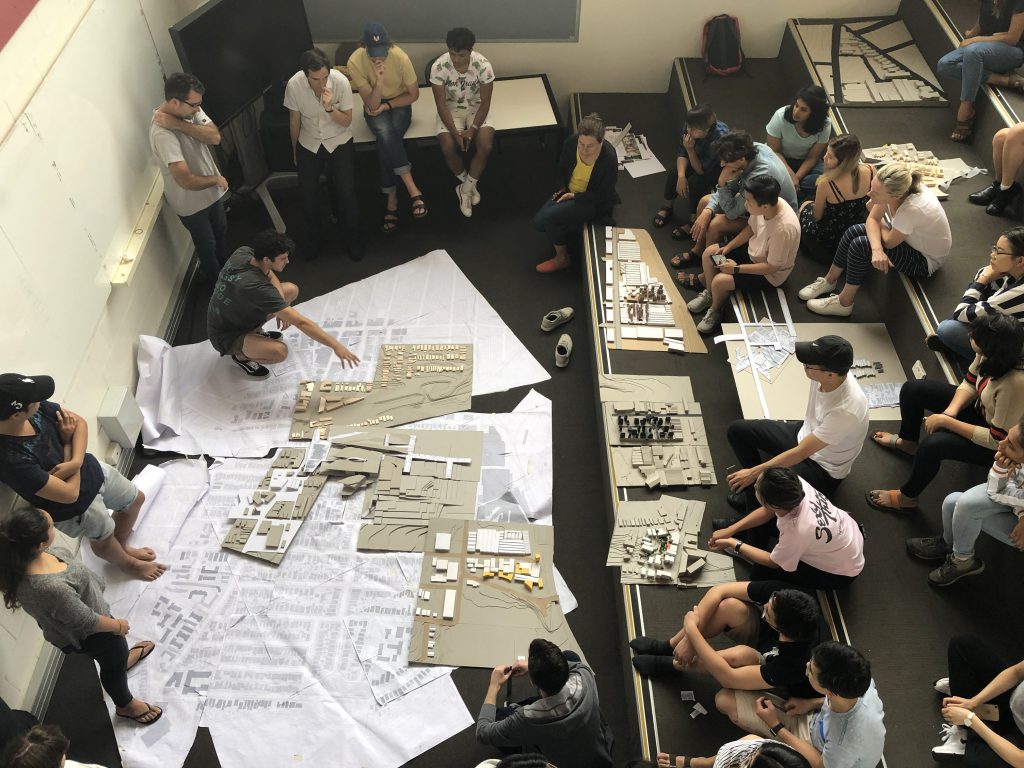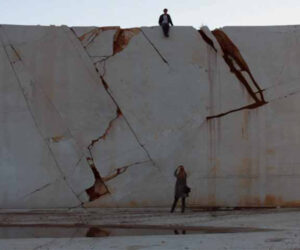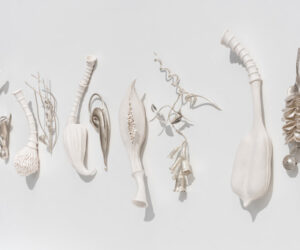First lecture in Utzon Lecture Series delivered for 2019
“The Discipline of the Existing” is the title that architects Flores & Prats chose for their lecture that kicked off the Utzon Lecture Series for 2019, at UNSW Faculty of Built Environment in Sydney, on Wednesday January 23, 2019. The lecture focused on the design process of the Sala Beckett in Barcelona, a renovation of an old workers’ cooperative into a new theatre and drama centre, and their later adaptation of this project for displaying it at Le Corderie Pavilion of Venice Architecture Biennale 2018.
“The building, constructed in Barcelona in 1924 and abandoned for more than 30 years, interested us not to restore it but rather to take the ruin forward and make it participant, with its unfinished character of superimposed periods, in a new reality that would continue to be updated on this foundation,” architects Ricardo Flores and Eva Prats stated.
“For the last Venice Biennale 2018, we decided to bring a full-scale fragment of Sala Beckett into the Arsenale, transforming the drama centre into a scenography, resonating with its theatrical character. This process of reimagining a real building as an exhibition space inside a historic structure opened up a new dialogue with the building containing it, its columns, windows and the entire new scale.”
The lecture explored Flores & Prats’ approach in rehabilitating old structures for new occupations. It’s a challenge the Spanish duo has frequently dealt with in the past few years as well as more recently, the studio being invited – together with Barkow Leibinger, Diller Scofidio + Renfro and Snøhetta – to participate in the competition promoted by the MIT Office of Campus Planning to lead the transformation of the historic Metropolitan Storage Warehouse (“the Met”), an early 20th century masonry storage facility, into a new “design hub” for MIT in Boston.
“We work with existing buildings, gradually developing from a process of observing and not from a preconceived or imposed idea of how to deal with existing structures. By approaching historic buildings this way, they acquire the role of an actor inside the project, along with the client and architect and equally as important. This contributes to the city by opening a dialogue between the building and its history, the physical and social heritage,” say Flores and Prats.
During their time at UNSW, architects Ricardo Flores and Eva Prats also hosted a two-week Urban Laboratory for students of this university. Sydney is undergoing unprecedented population growth posing predictable pressures on the urban setting. The studio, entitled “Building Communities,” focused in Marrickville, an especially diverse, multicultural suburb in metropolitan Sydney where hundreds of new dwellings are proposed by the government to meet this demand in the next few years. According to Flores & Prats, “The challenges are many, accommodating increased densities while mitigating impacts and enhancing amenity for these urban communities. The government planning is very high-level and lacking in more nuanced urban propositions that tap into the genius loci of this sub-region and the places within it.”
That’s why the challenge of the studio was to test the capacity of this area to increase residential densities with appropriate, affordable housing, while creating new communities which mix and add to that which exists. Students were asked to observe and value not just the built heritage but also the social heritage – the rich variety of cultures that coexist in a relatively small area, making it a whole world within the city.
“One of the crucial aspects of the workshop was that the program chosen to work with the students, the same that Sydney Planning Office is working with for the growth of this city,” said Flores and Prats. “We think that much part of the success of the experience for students, guests and us, was thanks to the subject posed. The idea to work not only with areas of the city which really need a new thinking, but actually to work with a program that is at the moment being discussed and debated at the decisional levels of the government, made the workshop extremely interesting for all of us. Bringing these themes of actuality to the school classes makes the academic experience much more tense, converting the studios in the perfect place for research with freedom and innovate.”
In order to test the students’ proposals and relate them to the real discussions that are taking place in the architecture realm of the city, Sydney architects were invited to the intermediate and final reviews. “In our opinion, the fact that we were not just discussing students’ school exercises but actual urban problems that Sydney city has now, made all the guests in the several reviews so energetically engaged in discussing the students’ solutions – generating extremely interesting debates as they became possible solutions for their city and its models of growth. And for us, [it] was a perfect way to get to know these problems as well, allowing us to participate somehow,” commented Eva and Ricardo at the end of this experience.
Guests to the reviews were: Philip Thalis, Councilor of Sydney City Planning Office, Anita Morandini, Design Excellence Manager of the City of Sydney, and local architects Rachel Neeson, Brendan Randles, Michael Tawa, Laura Harding, Andrew Burges, Jon Jacka, Philip Olfield and Helen Lochhead, Dean of UNSW Built Environment.





